“Whose idea was this?” I demand. There is an inch of snow on the ground, the temperature is in the teens, the weather forecast is for more snow, and the living room floor is covered with ski clothes, hats, socks, gloves, long underwear and anything else my sister can think of that will stand up to frigid temperatures on an open boat.
An open BOAT. 13 degrees in the sun.
But there is no one else to blame: This was my idea. In my self-appointed role as a hip-outdoor-adventurer-Auntie-Mame, I have invited two of my nephews to come on a winter marine ecology cruise on Long Island Sound. The boys were interested because they are science nuts who can tell you the name of every dinosaur, shark, sea mammal, and predator that ever lived complete with habitat, food sources, and when and how it evolved. I was intrigued because there is a chance of seeing seals: I grew up not 20 miles away and had no idea that seals hung out here in the winter. It’s one of the many things I’m about to learn.
In Your Bucket Because…
- It’s a real outdoor adventure within 50 miles of New York City.
- The tour includes explanations given by an educator from the Norwalk Maritime Aquarium, making this rather more than a simple boat trip.
- Good for hardy families and nature lovers.
But first: Gloves and hats have to be counted and clothing piles checked to be sure there is no cotton anything (cotton is “dead man’s clothes” in the winter). Finally the boys and I are off, me with misgivings that my job performance as Auntie Mame is destined for failure.
The Good Ship Oceanic
It’s a quick drive from my sister’s home in the New York suburbs to Norwalk, Connecticut. We easily find the R.V. Oceanic docked behind the Maritime Aquarium. We put on our ski pants and jackets, grab our bags of “warmies,” and head to the dock where Nicky Rosenfeld, an educator from the aquarium, is waiting. The sun is sliding out from under a thin layer of clouds, and despite the forecast, the weather looks positively benign.
There are 24 of us (the ship can take up to 25 passengers), and once on board, we cluster at the stern for the life jacket demonstration, along with instructions about port, starboard, bow and stern, and a brief intro to our ship: The “R.V.” in her name stands for “research vessel,” and while we are en route, we’ll be pulling up water samples to test for temperature, salinity, and oxygenation, as well as looking under the microscope to see what may be floating around in there.
The Science of Long Island Sound
We sail down the Norwalk River, under the Washington Street drawbridge, which opens for us, while Nicky continues her briefing. We learn is what a “sound” is — another embarrassing hole in my knowledge. Although there are several definitions, a sound is a body of water mostly enclosed by landmasses, in this case, Long Island and the Connecticut/New York coasts. In addition, sounds can be formed by glaciation. Here, the Wisconsin Glacier carved out a lake. When the Ice Age thawed, the glacier receded, sea levels rose, and the ocean poured in. The resulting body of water is brackish: part salt water from the ocean, part fresh water from the rivers that feed it.
Northern waters, Nicky tells us, are rich in plankton, which is why so many animals migrate to the Arctic: It’s not that they prefer the cold, but that they are following their food. The food chain starts with cold-loving plankton. In Long Island Sound, it culminates with the big predators, such as seals.
We’ll be using fine nets to skim plankton off the surface: The light-absorbing phytoplankton hang out here because that’s where the light is, and the zooplankton stick around because that’s where the phytoplankton are. It’s a plankton-eat-plankton world out there. She also tells us that plankton can be defined as anything that cannot swim against the current, including bigger organisms such as jellyfish (and me, I want to add).
Finally, she clarifies something I’d wondered about: the reason northern waters are such a deep blue while tropical waters near shore are turquoise. It’s precisely because of all that surface plankton, which causes light to reflect differently.
Searching for Seals
We continue motoring around the rocky islands of Long Island Sound. The lighthouse of Sheffield Island sits empty, its keeper replaced by modern electronics. If we’re going to see any seals, it will most likely be on the shores of one of these islands.
Nicky hands out binoculars, and I gaze through them at the enormous multi-million-dollar mansions that crowd against each other on disproportionately small seafront lots, eroded to even smaller sizes by recent hurricanes Irene and Sandy.
The weather has cleared, the threat of snow shriveled to the size of a few wispy clouds. Outside on the back of the boat, the temperature has dropped into the teens, and I’ve slowly donned my gloves, balaclava, hat, and scarf. Thus attired, I’m perfectly comfortable in the fresh salt air. Those who didn’t bring enough of the right clothes are huddled in the small heated cabin in the center of the boat. There are no other boats in sight.
I scan the rocks. Four species of seals visit Long Island Sound: Most common are the harbor seals, followed by grey, harp, and hooded, but I’m simply looking for the generic curved shape of a seal at rest.
I see plenty of birds: a loon saunters by — “snob birds,” Nicky calls them, because they have their beaks in the air. There are scores of long-tail ducks (Arctic migrants), swans, and gulls. I’m having a bit of trouble making out shapes because the boat is bouncing, making it hard to keep anything in the viewfinder long enough to identify it. But one thing is clear: No seals.
Sightings aren’t guaranteed, nonetheless, everyone expects to see one, even the crew, who seem a bit flummoxed why on a windless day like today there aren’t any about. Having been on more than a fair share of safaris, I’m well aware of the delight that comes with sighting 42 elephants at once — and the disappointment when you’re told, “You should have been here yesterday when the giraffe stood on his head and the ostrich danced the mambo.”
Most of the visitors are philosophical about it. The smaller children don’t seem to mind: They’ve become fascinated with some of the educational display items, which include a piece of seal-skin, a skull, and a bag of frozen fish. But a couple of adult passengers seem frankly annoyed and are looking for someone to blame.
My nephews aren’t at all fussed about the lack of seals. They liked the trip. Like me, they learned a few new science facts, and they stayed warm enough to be able to enjoy the outside.
“There were some weird people on that boat,” 11-year old Alex comments. “Like those ladies who kept complaining and saying it was a ripoff. It’s like, these are WILD animals! What don’t they get about that?”
Practicalities
- Critter cruises go out all year, but you only have a chance of seeing seals in the winter. In the summer, Long Island Sound is too warm for them and they head for shores along open ocean.
- Dress warmly: For a 20 degree day, I wore three layers on top and bottom: a long-underwear layer, an insulating layer, and an outerlayer. Ski clothes work, too. Bring hats, scarves, a balaclava, and gloves. Wear the warmest boots you have.
- Winter critter cruises go out on weekend mornings when the tide is low. They are canceled in heavy winds. The trip is 2 1/2 hours long.
- The boat crew hands out excellent binoculars. But bring a camera with a long lens; by law, the boat can’t get within less than 200 feet of any seals that are spotted.
- Kids must be 42 inches tall.
- Seal sighting are not guaranteed — although there is a consolation prize: You can always go into the aquarium and see them there.

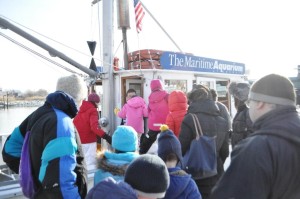
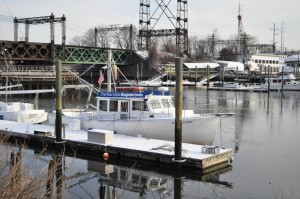
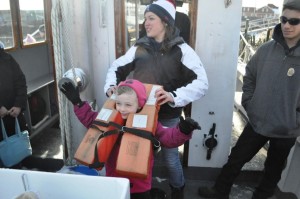
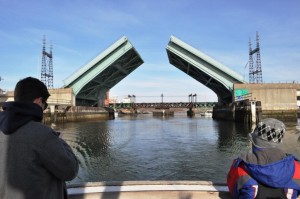
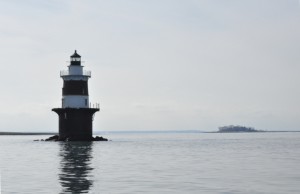
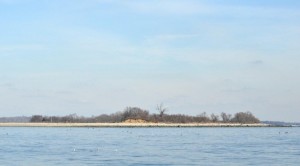
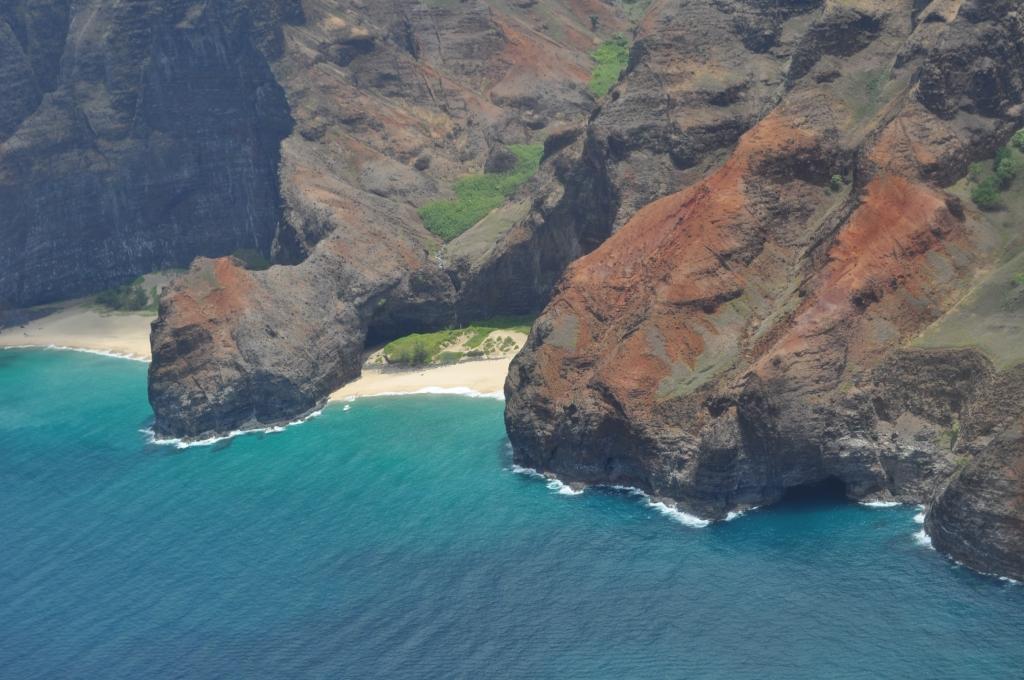
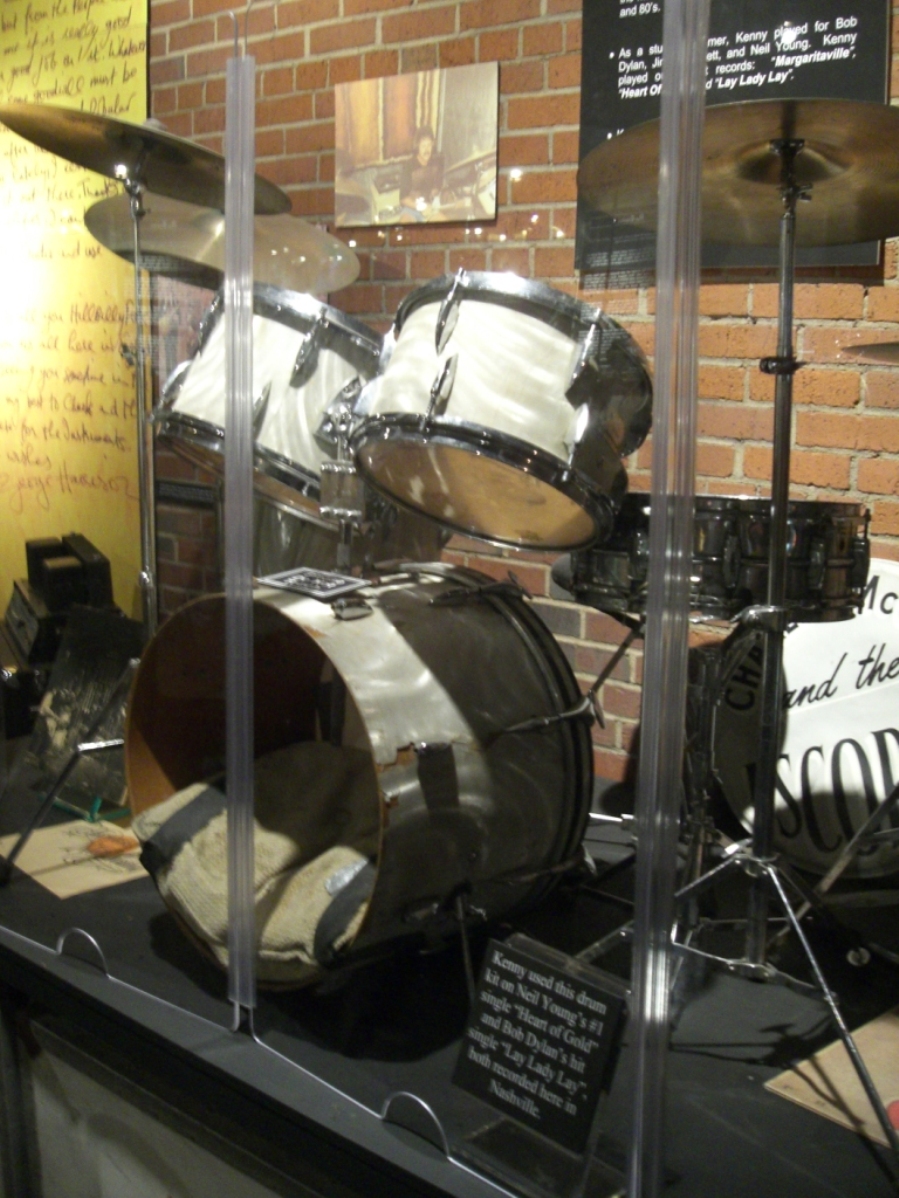
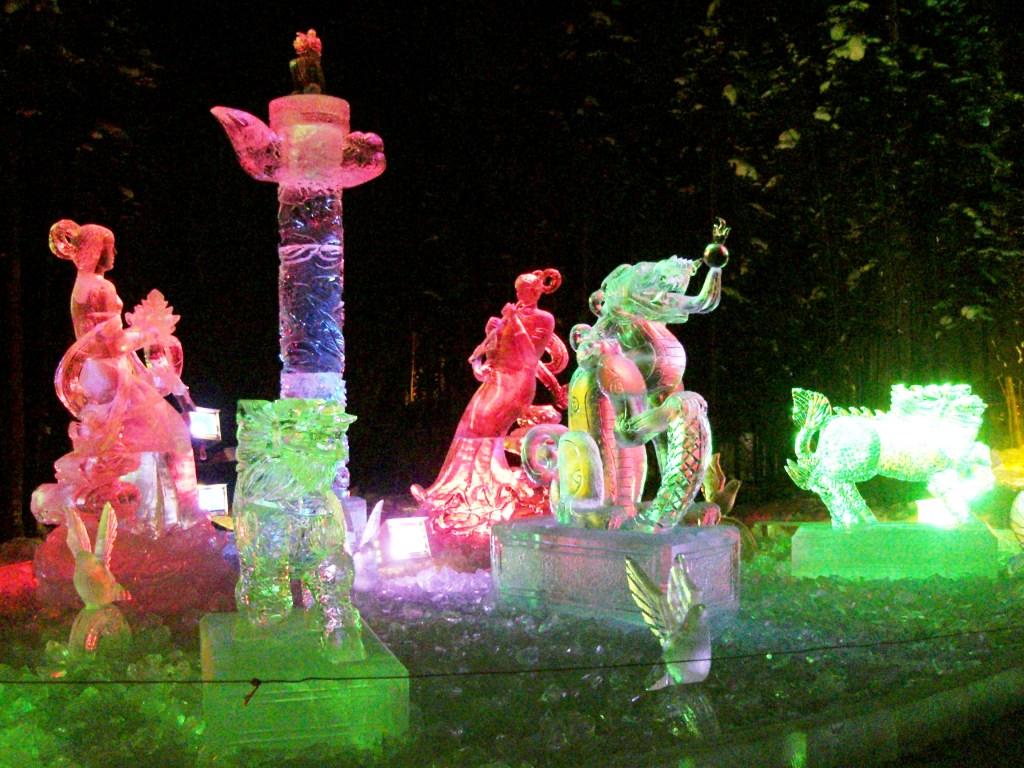
Love your turn of phrase — “It’s a plankton-eat-plankton world out there.” Wish I wrote like that!